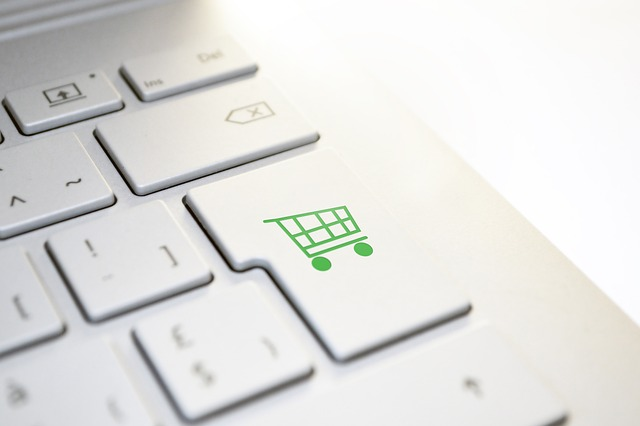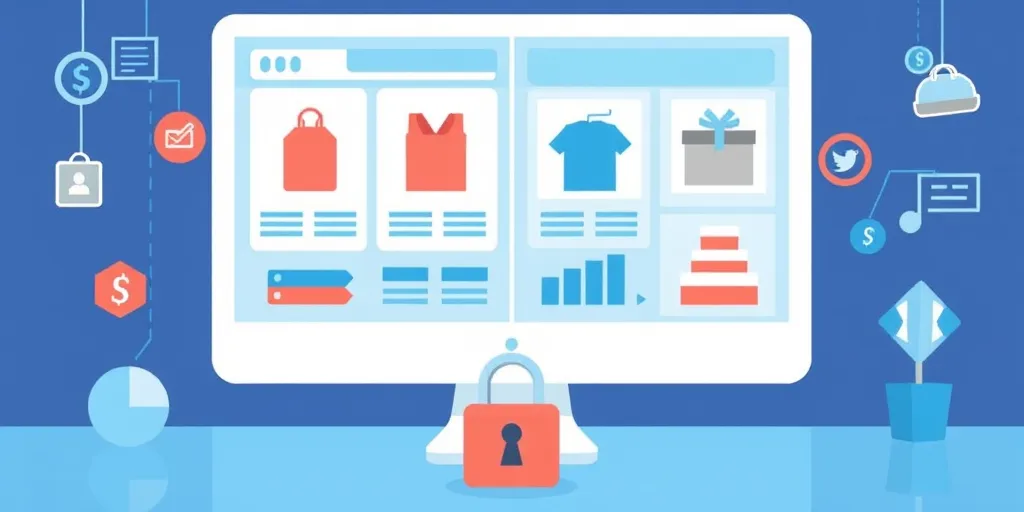As someone deeply entrenched in the e-commerce space, understanding the underlying currents shaping the future of online retail is pivotal to the success of any digital venture. That’s where Shopify’s Commerce Trends 2023 Report comes into play — it’s the key to unlocking the forthcoming changes in this dynamic industry.
In this article, I’ll be dissecting Shopify’s report, translating their comprehensive research into practical insights that could redefine the trajectory of your business. While I can’t give you the full report directly, my aim is to guide you through its most vital points, ensuring that you can grasp the implications for your business strategy and operations.
You’ll find analyses of emerging technologies, shifts in consumer behavior, and strategies that could set your own e-commerce brand and-commerce business apart. All of this is to ensure that when it comes to making informed decisions about your digital presence, you’re not just following trends — you’re setting them.
So, join me as I break down what Shopify’s Commerce Trends 2023 study suggests for the future of e-commerce website, and how you might adapt to these changes to keep your business ahead of the curve. And for those who are keen to explore every nugget of wisdom Shopify has to offer, I’ll provide a link to download their full Shopify’s Commerce Trends 2023 report at the conclusion of this article. Let’s dive in and explore what your e-commerce business might look like in the light of these insights.

Brands will need to better understand their inventory and supply chain needs
As e-commerce continues to expand, the ability to predict and respond to inventory demands is becoming crucial how a customer shops. Given this expansion, predicting inventory demands has become critical. Therefore, brands should invest in advanced supply chain analytics. This ensures product availability and avoids costly overstock situations.
More shoppers will use voice search
With the proliferation of smart speakers and voice-activated devices, more consumers are using voice search to shop online. Brands must optimize their product pages and content for voice search, focusing on conversational keywords and FAQs that align with natural speech patterns.
Shoppers place more trust in influencer recommendations
Influencers are seen as trusted peers by retail brands, and their recommendations carry weight with consumers. Brands that collaborate with the right influencers can leverage this trust to reach new audiences and increase conversions.
Voice search shopping is on the rise
As voice search becomes more accurate, shopping via voice commands is expected to rise. This trend suggests that brands should start integrating voice commerce into their digital strategy to provide a seamless shopping experience.
AI helps shops learn about shoppers
Artificial Intelligence (AI) technologies are being used to gather deep insights into shopper behavior. By analyzing data, AI can help brands predict trends, personalize experiences, and make smarter inventory decisions.
Augmented reality enhances the reality of online shopping
Augmented Reality (AR) is transforming the shopping experience by allowing consumers to preview products in their own environment. This not only improves engagement but can also reduce the likelihood of returns.
Shoppers will rely more on chatbots
Chatbots are becoming an integral part of the online shopping experience. They provide instant customer service, help in decision-making, and can guide online shoppers further through the purchase process, increasing efficiency and customer satisfaction.
Social commerce continues to grow and evolve
The integration of shopping capabilities within social media platforms is evolving. Brands should capitalize on this by creating engaging social content that is easily shoppable, using the platforms’ built-in commerce features.
Brands will tap into zero-party data to aid personalization
Zero-party data, information that customers willingly share with brands, is invaluable for personalization. Brands can use this data to create highly personalized experiences without compromising on privacy.
Consumers will become more comfortable with mobile shopping
As mobile devices become more powerful, consumers are increasingly comfortable shopping on them. Brands need to ensure their mobile sites and apps are optimized for a frictionless shopping experience.
Chatbots improve shopping experiences
Enhanced by AI, chatbots are becoming more sophisticated in handling complex customer service inquiries, leading to improved customer experiences and freeing up human resources for more complex issues.
Artificial intelligence will help brands learn more about shoppers
AI’s ability to process big data can uncover patterns and preferences, helping brands to understand their customers at a granular level and tailor their strategies effectively.
Big data plays a role in creating personalized experiences
Big data analytics allows for the aggregation and analysis of vast amounts of consumer data, enabling brands to offer highly personalized shopping experiences.
14 e-commerce Trends Leading the Way
As we march deeper into the digital age, e-commerce continues to break new ground. Here are 14 leading trends that are set to redefine the landscape of online retail. These trends not only highlight the trajectory of market growth but also serve as a beacon for businesses to align their strategies accordingly. Let’s explore these transformative trends that are steering the e-commerce world:

1. The Mobile Shopping Revolution
The ascendancy of mobile commerce is redefining the retail landscape, ushering in an era where the traditional brick-and-mortar store serves as a touchpoint for enriched customer experiences that extend beyond mere transactions. As smartphones become increasingly ingrained in our daily lives, they are the catalysts for a shopping revolution—turning every location into a potential point of sale.
The convenience of shopping through user-friendly apps and mobile-optimized websites is not just a trend but a new standard. Customers now expect the ability to browse and purchase with the same ease on their mobile devices as they would on a desktop. In response, businesses are prioritizing mobile-first designs that ensure quick load times, intuitive navigation, and streamlined checkout processes. It’s a move that not only meets customer expectations but also capitalizes on the impulsive nature of mobile shopping, leading to increased sales opportunities.
Moreover, the integration of advanced features like augmented reality, one-touch payment options, and personalized notifications are elevating mobile commerce to unprecedented heights. This paradigm shift is not signaling the end of physical stores but rather their evolution—as they transition into spaces for brand immersion, customer engagement, and service hubs that support the seamless omnichannel journeys consumers now demand.
2. On-site personalization uses those insights to create individualized experiences
Leveraging customer data, big data, AI, and machine learning, brands can create unique on-site experiences for each visitor, from personalized product recommendations to customized content, crafting individualized shopping experiences at an unprecedented scale.
3. Voice-Activated Commerce: Conversational marketing
Engaging customers in real-time conversations through chatbots or live chat can drive conversions by providing immediate assistance and personalized recommendations. As voice assistants permeate households, voice search shopping is becoming more sophisticated and widely adopted.
4. The Rise of Social Commerce
Platforms like Instagram and Facebook are turning into shopping destinations, with direct purchase options embedded in social feeds.
5. Augmented Reality Shopping: AR and VR enhance online shopping experiences
Augmented and Virtual Reality technologies are providing immersive experiences that help bridge the gap between online and in-store shopping, offering customers a new way to engage with products.
6. It’s all about sustainability and social responsibility
Sustainability and ethical practices are becoming key differentiators as consumers increasingly prefer brands that are environmentally and socially responsible. A growing number of consumers are choosing brands that demonstrate a commitment to sustainability and ethical business practices.
Consumers are choosing brands that align with their beliefs
Brands that align their values with their consumers can forge stronger connections and more customer loyalty further, as customers look to support businesses that reflect their own beliefs and commitments.
7. Headless and API-driven e-commerce allow continued innovation
The flexibility of headless CMS and API-driven e-commerce architectures enables e-commerce brands to quickly adapt to market changes and integrate new technologies without overhauling their entire systems.
The separation of front-end presentation layers from back-end commerce functionality is allowing for agile, omnichannel experiences.
8. Chatbots and virtual customer service are the future
Virtual customer service, powered by AI and machine learning, is providing consumers with more efficient and personalized customer service experiences.
9. Subscriptions models help retain loyal customers
Subscription models encourage repeat business and help stabilize revenue streams by offering convenience and added value to the customer experience. These services are building brand loyalty by catering to the desire for convenience.
10. Influencer Marketing
The trust shoppers place in influencers is prompting brands to forge partnerships that resonate with target audiences.
11. Interactive Content
From quizzes to games, interactive content is engaging shoppers in new and exciting ways.
12. International Expansion
Online retailers are tapping into new markets, adapting to local preferences, and navigating cross-border e-commerce with ease.
13. Payment Options Diversity
A range of payment options, including cryptocurrencies and BNPL (Buy Now, Pay Later), are meeting the demand for flexibility.
14. Zero-Party Data Utilization
In the wake of privacy concerns, zero-party data is enabling brands to personalize experiences with consumer consent.
Is e-commerce growing?
The digital marketplace is not just expanding—it’s fundamentally reshaping the global retail landscape. Current trends and projections underscore a clear and sustained growth trajectory for e-commerce, which has been catalyzed by technological advancements, shifting consumer behaviors, and the increasing digitalization of commerce. Here’s what the latest data suggests about e commerce trend:
Unstoppable Momentum
The numbers speak volumes: global e-commerce sales are expected to continue their upward trend, surpassing traditional, retail sales at an unprecedented rate. Even as brick-and-mortar stores regain foot traffic post-pandemic, online sales have maintained their hold, indicating a permanent shift in shopping habits. E-commerce is not merely growing; it is becoming a staple of the modern consumer experience.
Technological Tailwinds
Technology is the engine behind this relentless growth in e-commerce sales. With improvements in mobile technology, payment security, and user experience, customers are finding fewer reasons to visit physical stores. Retailers are responding by enhancing their online presence and investing in e-commerce platforms like Shopify to streamline the customer journey from discovery to delivery.
Cross-Border Expansion
Growth is not limited by geography. Cross-border e-commerce is booming, with consumers increasingly purchasing from overseas retailers, driven by a wider selection of products and competitive pricing. This internationalization of e-commerce opens new markets for businesses and contributes to the e-commerce industry here’s overall expansion.
Changing Consumer Demographics
E-commerce is growing not only in volume but also in scope. Older generations, once hesitant about online shopping, have embraced it for its convenience and safety. Meanwhile, digital-native younger generations are entering their prime spending years, further solidifying the dominance of e-commerce solutions and online shopping.
The Pandemic Effect
The COVID-19 pandemic has been a significant accelerator for e-commerce growth. Lockdowns and social distancing led to a surge in online shopping, a habit that has persisted due to its convenience and efficiency. The pandemic has also pushed retailers to innovate rapidly, leading to improved online services and the widespread adoption of omnichannel shopping online retailing.
Future-Focused Investments
Businesses are not just reacting to current trends on e-commerce sites but are preparing for a future where e-commerce is the norm. Investments in artificial intelligence, machine learning, and big data analytics are becoming commonplace, with brands leveraging these tools to personalize shopping experiences and optimize their supply chains.
Sustainability as a Growth Driver
Sustainability is emerging as a key factor in consumers and e-commerce businesses’ purchasing decisions. E-commerce platforms are increasingly focusing on reducing their carbon footprint, offering sustainable products, and ensuring ethical supply chains, aligning with consumer values and driving further growth.
Summing It Up: e-commerce claims a larger share of the total retail pie
To question whether e-commerce is growing is to overlook the profound transformation underway in the retail sector. With each passing year, e-commerce claims a larger share of the total retail pie, signaling not just growth but evolution. For businesses, the message is clear: those who invest in and adapt to the e-commerce boom will find themselves riding the wave of the future, while those who do not risk being left behind.
Strategic Insights and Trend Adaptation for e-commerce
Make the most of digital tools and analytics to assess your customers’ behavior
Utilizing digital tools and analytics can help brands gain insights into customer behavior, allowing for more effective marketing strategies and improved customer experiences.
Absorb up-to-date industry research and trends reports
Staying informed with the latest research and trends ensures that brands can anticipate market shifts and remain competitive.
Weighing Your Options: Deciding if a Trend Makes Sense for Your Business
Not every trend will fit every business model. Brands should assess trends critically to determine if they align with their strategic goals and customer needs.
Shopify’s Commerce Trends 2023
Shopify’s Commerce Trends 2023 – Download Link
https://www.shopify.com/plus/commerce-trends
Shopify’s Commerce Trends 2023 – Preview Video

As we conclude our dive into the e-commerce trends that are shaping the market, remember that the journey doesn’t end here. If you’re intrigued by the ever-evolving world of e-commerce, or you’re eager to keep abreast of the latest industry movements, I’m here to be your guide.
Lastly, if you’re keen on e-commerce trends, consider following me for updates. I cover various e-business topics at blog.bogozi.com/topics/ebusiness/. Furthermore, for real-time insights, follow me on Twitter or subscribe to my newsletter. I’ll keep you informed about what’s new and what’s next in the digital marketplace.


